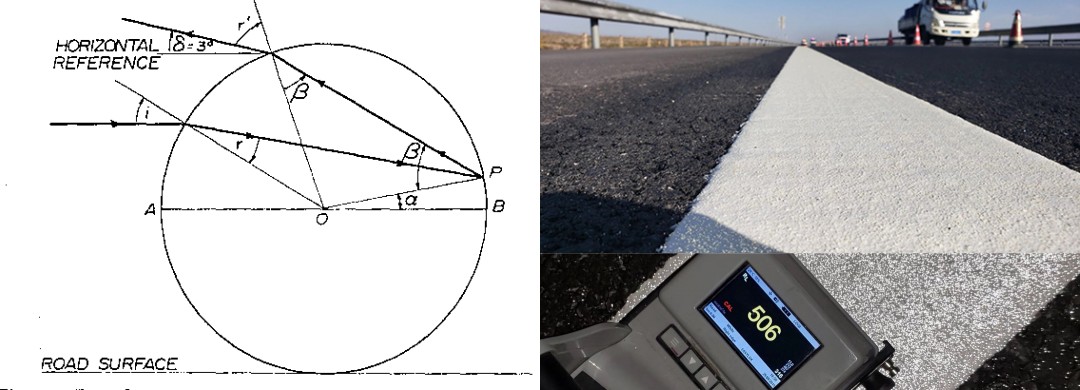- Tel : 86 552 7165551
- Email : echo@cntory.com
- Skype :echotory@hotmail.com
History of Glass
Beads for Road Markings

Glass
beads have always been used to make reflective road signs. If properly embedded
in the marking material, the glass beads are able to collect the incident light
and reflect some of it back to the light source. It's this ability that makes
these small, spherical glass particles unique.
1952: Pocock and Rhodes first studied the principle of glass bead retroreflection.
1967: Dale
demonstrated in the NCHRP report and recommended the use of larger size glass
beads.
1969: Dale
first proposed the best retroreflection of dry and wet reflective marking and
glass bead settlement of 60%.
1976: DaForno
of Potters presented a comparison of adhesion of glass bead coatings and marking
coatings at the TRB annual meeting.
The
surface treatment of AC-04 improved the bead-coating adhesion 5 times more than
that of moisture-proof glass beads, and 25% better than the uncoated glass
beads.
The
surface treatment of AC-02 improved the bead-coating adhesion by 10 times
compared with the moisture-proof glass beads, and was 50% better than the
uncoated beads.
Note:
AC-4, AC-2 adopt different coating processes for different marking materials
(such as hot melt, epoxy, PMMA, etc.)
1984:Larger glass
beads were tested in laboratories and field testing sites in northern New
Jersey, providing reflectivity 3-4 times higher than standard beads. And for
the first time, the 350 mcd road marking was proposed to provide drivers with more
clear guidance.
1986: Timely evaluation of installation with retroreflectometer with the active
cooperation of Maryland Department of Transportation. During initial and
subsequent evaluations, larger beads proved to be more retroreflective.
1987: Preliminary
field trials of large particle size glass beads were conducted in New Jersey.
Actual field applications are carried out with thin film materials (epoxy
resins) and thick film materials (hot melt coatings, polymethyl methacrylate
(PMMA) of less than 20 mil in order to optimize glass bead adhesive systems.
Changes in adhesive film thickness, glass bead size, and glass bead surface
treatment were evaluated, and reflectivity, durability, and night performance
on wet roads were evaluated with portable reversemeters.
March 1987: Painting
was done using hot melt type paint according to Florida codes, and a year later
a local observer evaluated the site and noted that the site was wet reflective.
August 1987: On a
four-lane highway in California. Using a hot melt paint with large particle
size glass beads, the site was observed to provide good wet reflection
performance 6 months after installation.
In
conclusion,high
quality reflective road markings can bring more safety to pedestrians and
drivers. Glass beads are a key factor in
ensuring visibility of road markings at night. The ultimate purpose of
installing and maintaining road markings is to improve road safety; for this,
high-quality raw traffic safety materials are essential.
Tory, as a leading manufacturer of glass beads for road markings with more than 30 years-experience,
is dedicated to renovating technology and keeping quality high. Tory is glad to
offer help if you need glass beads for road markings. And all products can be customized according to
customer requirements. For more information, or to get started on your traffic safety solution: https://www.cntory.com/
Feel free to contact us:
Email: Echo@cntory.com
WhatsAPP: +8617355287086
scan to wechat:
